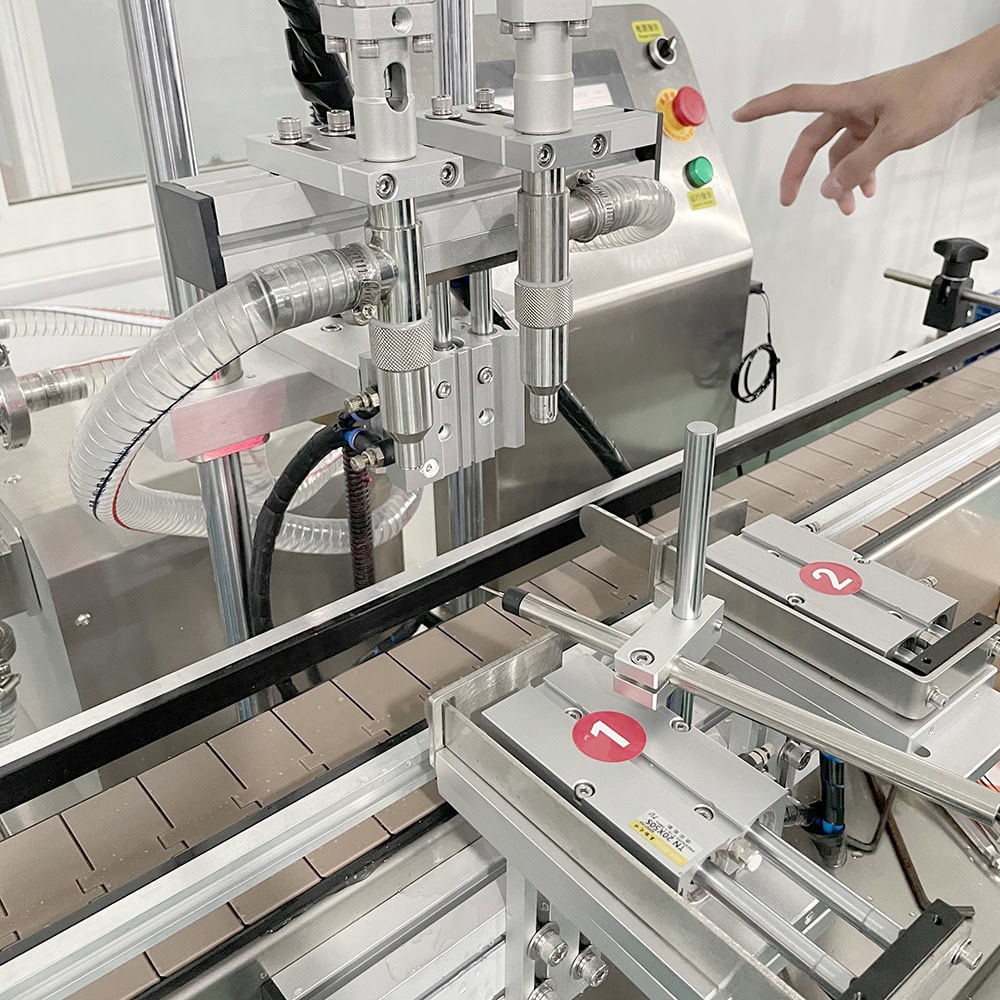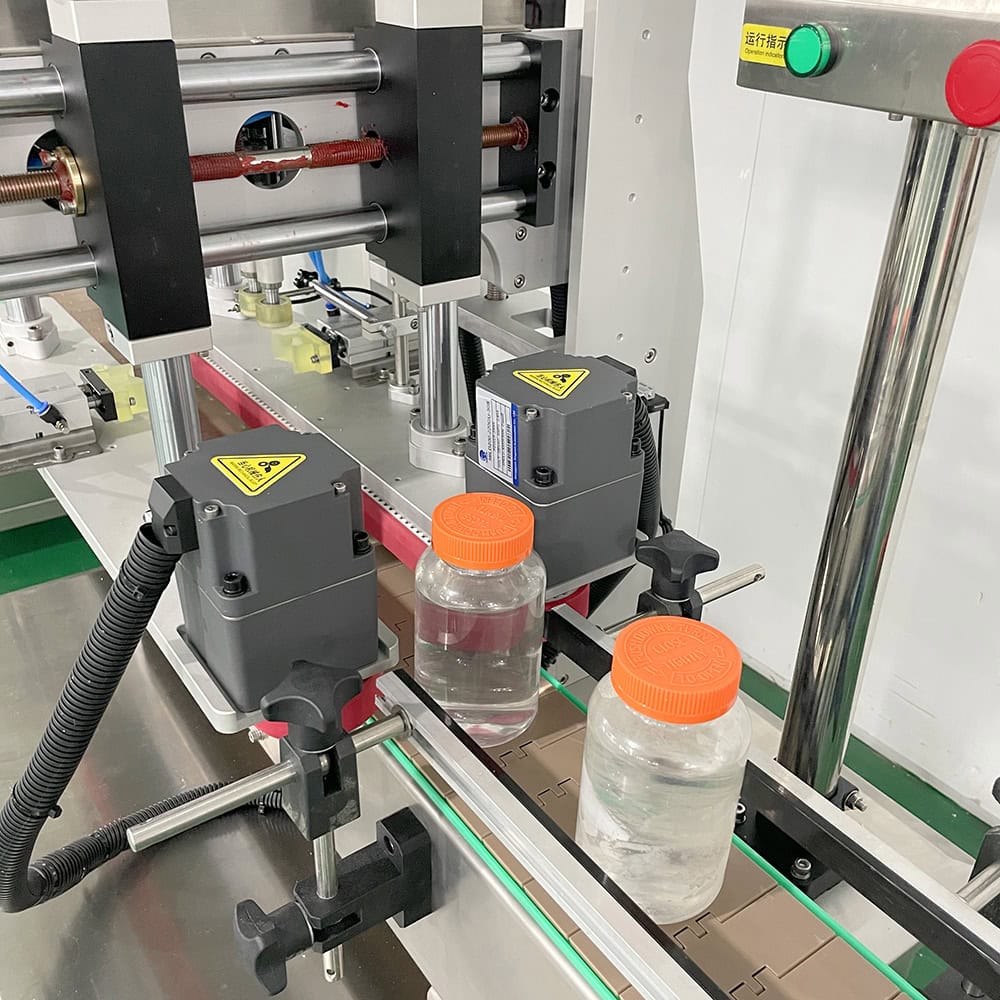Many businesses have trouble producing stuff fast enough. They may have difficulties filling whatever it is they sell accurately. This can cause all kinds of problems. A filling machine is typically used for filling bottles.
A filling machine automates the process of dispensing liquids, powders, or granules into containers, ensuring consistency, efficiency, and precision in various industries such as food, pharmaceuticals, and cosmetics.
To understand how they work and the impact they will have on your business, I will tell you what they are and what they do.
What is the Application of Filling Machines?
Filling machines are essential tools in industries like food and beverages, pharmaceuticals, and cosmetics. They are designed to fill a variety of containers, from bottles to pouches, with different types of products such as liquids, powders, and creams. For example, in the food industry, filling machines are used to fill containers with sauces, beverages, and oils, while in the pharmaceutical sector, they are used to fill syringes, vials, and capsules.
By automating the filling process, these machines ensure precision in volume, reduce human error, and significantly increase production efficiency. Additionally, they help maintain hygiene standards, particularly in industries like pharmaceuticals, where contamination is a critical concern.
What are the Different Types of Filling Machines?
There are several types of filling machines designed to handle different products. Some of the most common include liquid filling machines, powder filling machines, and tube filling machines.
- Liquid filling machines are used in industries such as beverages, chemicals, and pharmaceuticals to fill liquids with varying viscosity levels. This includes filling bottles with water, juice, or even more viscous products like syrups and creams.
- Powder filling machines handle dry products like flour, protein powder, and other granular substances, ensuring accurate weight and volume in every container.
- Tube filling machines are specialized for filling plastic or metal tubes with products like toothpaste, creams, and gels, often sealing the tubes after filling.
How Does a Filling Machine Work?
Filling machines operate by transferring product from a bulk supply to individual containers using gravity, pressure, or vacuum systems, depending on the type of machine and product. The choice of system is influenced by the viscosity or physical properties of the product being filled.
For liquid products, gravity filling is commonly used for low-viscosity substances, while pressure or piston filling systems handle thicker products. These machines ensure the correct amount of product is dispensed into each container, enhancing consistency and reducing waste.

What is the Principle of a Liquid Filling Machine?
Liquid filling machines work on various principles, including gravity filling, piston filling, and vacuum filling.
- Gravity filling uses the force of gravity to fill containers, making it suitable for low-viscosity liquids like water and juice.
- Piston filling, on the other hand, uses a piston to push liquid into the container, which is ideal for thicker products like lotions, sauces, or syrups.
- Vacuum filling involves creating a vacuum in the container to draw in liquid, often used for filling products like perfumes or oils.
These machines ensure that each container receives a precise and consistent amount of liquid, preventing overfilling and minimizing product loss.
Advantages of Using Filling Machines
Filling machines offer numerous advantages, including increased speed, precision, and reduced labor costs. By automating the filling process, businesses can significantly ramp up production, meeting higher demands without sacrificing accuracy.
In addition, the use of filling machines minimizes product wastage, as they are designed to dispense precise volumes of liquid or powder. This not only saves money but also enhances the overall efficiency of the production line.
Applications of Automatic Filling Machines
Automatic filling machines are indispensable in large-scale operations, such as bottling plants or pharmaceutical production lines, where high-speed production is essential. These machines are equipped with advanced controls that allow them to fill hundreds or thousands of containers per hour with minimal human intervention.
For example, liquid filling machines are often paired with packaging solutions like a bottle unscrambler or a shrink wrap machine to form a complete, automated bottling system that ensures seamless operation from start to finish.

Benefits of Using a Filling Machine
The key benefits of using a filling machine include reduced wastage, enhanced production speed, and improved consistency. By ensuring that each container receives the exact volume of product, filling machines minimize the need for manual labor, thereby reducing the risk of contamination in the production process.
Filling machines are also versatile and can be customized for different types of products and containers, making them highly adaptable to the needs of various industries.
How to Choose the Right Filling Machine?
Choosing the right filling machine depends on the type of product being filled, the desired production speed, and the specific requirements of the industry. For example, liquid filling machines may vary in their capabilities based on the viscosity of the product they handle. Similarly, a bottle filling machine is ideal for products like beverages, while a powder filling machine would be better suited for dry, granular products like spices or flour.
It’s essential to consider the type of filling technology (gravity, piston, or vacuum), the desired production volume, and the compatibility with other packaging equipment, such as labeling machines or capping machines, to ensure a smooth and efficient production line.










